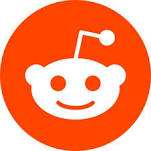How I Started An $18K/Month Digital Marketing And Websites Business
Hello! Who are you and what business did you start?
After working at a marketing agency for many years, my brother and I decided to launch our own agency, specializing in clear messaging for businesses. I became the first StoryBrand Certified guide in my city and we started providing services for companies who wanted to clarify their brand message, launch websites that converted at a higher rate, and create marketing campaigns that had a strong ROI.
We closed out 2020 with over $230,000 in sales (during the pandemic) and are looking forward to continued growth in the coming years.

Take us through the process of designing, prototyping, and manufacturing your first product.
My brother started and has grown a plumbing company a few hours away and loves the process of entrepreneurship. He approached me about the idea of launching a marketing agency, which I was excited to do. He provided the initial capital and I focused on operations and strategy. We estimated initial startup costs and he provided the initial seed money to get started and acts as a business coach and mentor for the big picture parts of Kairos Digital.
I had several clients on the deck that I thought would be interested in starting with me, so once the paperwork was finalized I was able to start doing business under the new entity.
Fear is your enemy when choosing who to work with. You see your payroll and you know you need to onboard new clients, and that fear of failure often drives you to say yes to people you know are a bad fit.
Our first client was a roofer in my hometown, and we were able to redo their website and launch a lead generation campaign that is now running a 17x return on their investment. They have been our longest-running client and the client with the clearest calculation of strong ROI.


Describe the process of launching the business.
The first year we launched was in the 4rth quarter of 2019 and we onboarded 3 retainer clients and several smaller projects. We focused on ongoing marketing and communication work as well as digital ads and email marketing.
As 2020 rolled around and COVID-19 hit in full swing, we lost one of our larger clients due to their budget cutbacks and saw several prospects pull back and change direction, which slowed down our growth. We started with just me, working on my laptop in a coworking building, and we’ve added on one full-time employee, two interns, and a few virtual assistants who do data entry, graphic design, and web development.
Our first few clients were in the service industry and nonprofits, but we’ve grown to serve a wider variety of clients, including software companies, start-ups, law firms, retail/brick and mortar, online subscriptions, and even our local NPR station.
We were able to survive our first year through the pandemic and remain afloat, though we still weren’t turning a profit.
As a principle, we chose to not go after the PPP offered by the federal government during the pandemic, even though we qualified. The reason being that in hard times, we wanted to innovate, rather than expect to be kept afloat by the government. This led to an increase in digital networking, an expansion of our offerings, and an increase in the kinds of projects we took on, which have paid off.
We wanted to remain in the mindset of plenty, not scarcity. So we planned on getting more strategic during the time, rather than resting on the PPP funds.

Since launch, what has worked to attract and retain customers?
If you are launching a new business, take the time to create your own sales funnel for your own business. Too many business owners focus on delivering the product and not enough time creating the systems to attract new customers.
People always talk about working in your business vs working on it. It is not a problem you will ever solve - it’s a tension you will have to manage the entire time you are in business.
One of the early decisions we made was for me to become a Certified StoryBrand Guide. This got me into a global network of other professionals who function as a support and referral network. This was one of the single most important decisions we made.
We also prioritized our own digital ad strategy to attract new customers. Without a strong presence online, SEO, and social media, we knew we were holding ourselves back from growth. We’ve done Facebook Ads, Google Ads, Local SEO, LinkedIn, Reddit, Instagram, TikTok, and Clubhouse. Google Ads and content strategies are areas we’re focused on right now and we’ve seen good results from it.
To date, our most profitable kind of work is the ongoing retainer marketing work. We enjoy the project-based work, but we really enjoy embedding with a client and becoming their go-to team. It’s not only the best kind of work for us, but it’s also the best return on investment for our clients since we can control the process of marketing, rather than just the assets.
Facebook Ads are a standard tactic in our industry, but they are constantly changing, which makes them the right choice for some clients and the wrong choice for others. The demographics are also constantly changing, so where it used to be the go-to ad platform, it has become one tool of many and the tool for many clients as well.
I think one of the best pieces of advice I could give to someone is to protect your onboarding process. Have a lot of leads, but don’t say yes to everyone. The only thing worse than a bad employee is a bad client. We actually chose to fire a client in our first year that was several thousand dollars per month because we could see that they weren’t willing to be led by the marketing strategy. It was a hard decision, but we knew it was the right thing to do.
Early on, you have to trust your gut when it comes to identifying who is a bad client. When you get the feeling that a client is going to be a nightmare client, politely decline or refer to someone that would be a better fit. Fear is your enemy in this respect. You see your payroll and you know you need to onboard new clients, and that fear of failure often drives you to say yes to people you know are a bad fit.
After you’ve grown, you can’t trust your gut as much because there is data you just don’t have, so your gut is easily wrong. When that starts happening, you have to install a vetting process, similar to a hiring process, when it comes to new clients.
How are you doing today and what does the future look like?
We are not profitable yet, but we’re getting close. We foresee 2021 being a key year for the agency as businesses are wanting to recover after the Pandemic. We are focusing on controlling costs and increasing revenue.
We plan to keep growing as quickly as we can until we reach one million and then focusing on systems and processes. We think we will be able to grow quickly to that point and then need to shift gears to something that scales better.
Through starting the business, have you learned anything particularly helpful or advantageous?
People always talk about working in your business vs working on it. It is not a problem you will ever solve - it’s a tension you will have to manage the entire time you are in business, so figure out a system to manage it. If doing our own marketing isn’t on my calendar, it won’t get done. You have to make time to create the infrastructure to succeed, and for us, that means improving quality and improving our own marketing.
What platform/tools do you use for your business?
- WordPress
- Asana
- Gusto
- Quickbooks
- Proposify
- Bannersnack
- Google Ads
- ActiveCampaign
What have been the most influential books, podcasts, or other resources?
- Building a StoryBrand by Donald Miller
- Marketing Made Simple by Donald Miller
- Business Made Simple by Donald Miller
- Profit First by Michalowicz
- Do Scale by Les Mckewan
- Next Generation Leader by Andy Stanley
Business Made Simple podcast
Advice for other entrepreneurs who want to get started or are just starting?
Your job is to start moving, pay attention, and adjust. Don’t spend too long planning before you start doing it - you have to start moving. If you don’t, you are going to have a hard time doing anything until you actually do something.
Don’t be afraid of failure. You will fail at things. Your job is to fail fast, learn fast, and get back up.
Where can we go to learn more?

Download the report and join our email newsletter packed with business ideas and money-making opportunities, backed by real-life case studies.

Download the report and join our email newsletter packed with business ideas and money-making opportunities, backed by real-life case studies.

Download the report and join our email newsletter packed with business ideas and money-making opportunities, backed by real-life case studies.

Download the report and join our email newsletter packed with business ideas and money-making opportunities, backed by real-life case studies.

Download the report and join our email newsletter packed with business ideas and money-making opportunities, backed by real-life case studies.

Download the report and join our email newsletter packed with business ideas and money-making opportunities, backed by real-life case studies.

Download the report and join our email newsletter packed with business ideas and money-making opportunities, backed by real-life case studies.

Download the report and join our email newsletter packed with business ideas and money-making opportunities, backed by real-life case studies.













